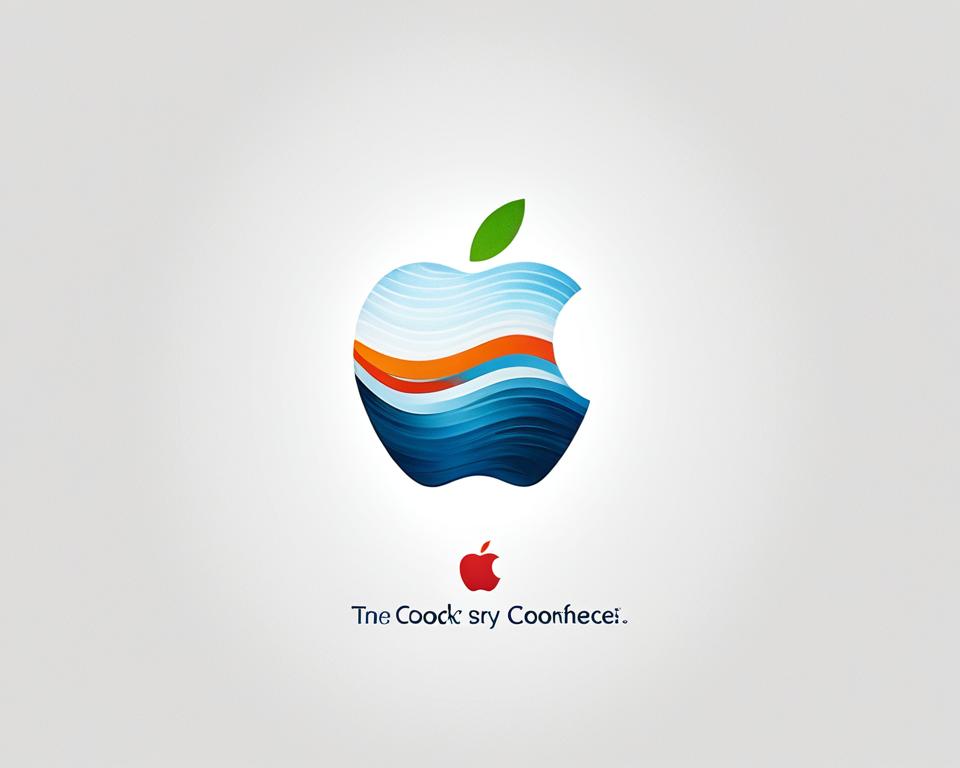Tim Cook, the CEO of Apple since August 2011, has established a leadership style that has propelled the company to unprecedented heights. Known for his charismatic and thoughtful demeanor, Cook’s management approach and decision-making style have shaped Apple’s success in the post-Steve Jobs era.
Cook’s leadership qualities encompass a democratic style that fosters cooperation and consensus-building among Apple’s talented individuals. While his tenure may have seen a reduction in groundbreaking product launches, Cook’s focus on existing strengths and fostering strong business and employee relationships has driven Apple’s continued success.
Despite criticisms of slower decision-making compared to his predecessor, Cook’s calm and methodical approach inspires the best work from team members. He believes in taking risks, maintaining composure during challenging times, and actively listening to others. Collaboration, transparency, and social responsibility are core values in Cook’s leadership philosophy.
Key Takeaways:
- Tim Cook’s leadership style is characterized by a democratic approach, promoting teamwork and cooperation among employees.
- He emphasizes existing strengths and fosters strong business and employee relationships.
- Cook inspires the best work from his team members through constant questioning and a calm demeanor.
- Collaboration, transparency, and social responsibility are significant values in Cook’s leadership philosophy.
- Despite slower decision-making, Cook’s strategic leadership focuses on integrity, ethics, and long-term success.
Tim Cook’s leadership legacy serves as a blueprint for aspiring leaders. His journey exemplifies resilience, commitment to education, and a dedication to making a positive impact on society. By embracing change, fostering collaboration, and upholding strong values, Cook continues to inspire and drive Apple’s success.
Table of Contents
Tim Cook’s Management Approach
Tim Cook, the CEO of Apple, has cultivated a management approach that can be characterized as democratic. He recognizes the value of cooperation among Apple’s talented employees and actively fosters a culture of collaboration and teamwork.
Unlike his predecessor, Steve Jobs, Cook places a strong emphasis on consensus-building and values the input and perspectives of high-level employees. By encouraging open dialogue and soliciting diverse viewpoints, Cook ensures that decisions are made with the collective wisdom of the team.
One of Cook’s key strengths as a leader is his ability to build and maintain strong business relationships. He understands the importance of forging strategic partnerships and nurturing long-term connections with stakeholders. Cook’s focus on fostering business relationships has contributed to Apple’s continued success and growth.
In addition to nurturing business relationships, Cook also prioritizes fostering employee relationships. He has been described by employees as charismatic, thoughtful, and calm under pressure. Cook’s approach to management promotes trust and empowers employees to find and implement their own solutions, encouraging them to think critically and innovate.
To keep employees sharp and motivated, Cook employs constant questioning, challenging his team members to think deeper and explore creative solutions. This approach not only inspires excellence but also encourages collaboration and teamwork, driving the organization forward.
Overall, Tim Cook’s management approach combines a democratic leadership style with a focus on cooperation, consensus-building, and fostering strong business and employee relationships. While it may have resulted in slower decision-making and a loss of the innovative drive seen under Steve Jobs, Cook’s approach promotes collaboration, teamwork, and a sense of ownership within the organization.
Benefits of Tim Cook’s Management Approach:
- Encourages cooperation and teamwork among employees.
- Values the input and perspectives of high-level employees.
- Fosters strong business relationships for long-term success.
- Cultivates employee relationships based on trust and empowerment.
- Promotes critical thinking, innovation, and collaboration.
| Benefits of Tim Cook’s Management Approach: |
|---|
| Encourages cooperation and teamwork among employees. |
| Values the input and perspectives of high-level employees. |
| Fosters strong business relationships for long-term success. |
| Cultivates employee relationships based on trust and empowerment. |
| Promotes critical thinking, innovation, and collaboration. |
Tim Cook’s Decision-Making Style
Tim Cook’s decision-making style can be characterized as democratic and consensus-building. He believes in fostering teamwork and collaboration among high-level employees to ensure that important decisions are made collectively. Unlike his predecessor, Cook has shifted away from hands-on participation in product engineering, entrusting those responsibilities to his executive team.
Cook’s leadership style is known for empowering leaders within the organization to find and implement their own solutions. He encourages his team to take ownership of their projects, making them feel valued and motivated. Cook is considered a “multiplier” leader, as he has the ability to make employees smarter, more innovative, and more competent through his leadership style.
This approach may result in slower decision-making compared to a more autocratic style, but it fosters industry and employee goodwill. By involving team members in the decision-making process and valuing their input, Cook creates a culture of collaboration and shared responsibility.
Hands-On Participation and Empowering Leaders
Tim Cook’s decision-making approach involves reducing his hands-on participation in product engineering and allowing his executive team to take charge. This delegation of duties enables leaders within the organization to step up and showcase their expertise. Cook’s trust in his team empowers them to find innovative solutions and take risks.
Cook’s leadership style aligns with the concept of empowering leaders – individuals who motivate and support their team members to achieve their fullest potential. By delegating responsibilities and valuing their input, Cook helps his team to grow both professionally and personally.
Consensus-Building for Enhanced Decision-Making
Consensus-building is a key aspect of Tim Cook’s decision-making style. He encourages high-level employees to work together and reach a collective agreement before making important decisions. By involving multiple perspectives and considering different viewpoints, Cook ensures that decisions are well-rounded and comprehensive.
This approach not only fosters collaboration and teamwork but also enhances the quality of decision-making. With consensus-building, Cook reduces the risk of overlooking important factors or making hasty choices. It creates a sense of ownership and shared responsibility among the team, leading to the implementation of effective solutions.
Benefits of a Democratic Decision-Making Style
Tim Cook’s democratic decision-making style brings several benefits to Apple and its employees:
- Increased employee engagement: By involving employees in the decision-making process, Cook fosters a sense of ownership and engagement.
- Enhanced innovation: By empowering leaders and encouraging their input, Cook sparks innovation and creativity within the organization.
- Improved employee motivation: Cook’s collaborative approach motivates employees to contribute their best ideas and take ownership of their work.
- Better team dynamics: Consensus-building improves relationships among team members, fostering a collaborative and supportive work environment.
Tim Cook’s Decision-Making Style Table
| Decision-Making Style | Description |
|---|---|
| Democratic | Cook values input from high-level employees and fosters collaboration to make decisions collectively. |
| Consensus-Building | Cook encourages teamwork and involves multiple perspectives to reach agreement before making important decisions. |
| Hands-Off Participation | Cook delegates product engineering duties to his executive team, empowering them to find and implement solutions. |
| Empowering Leaders | Cook empowers leaders within the organization to showcase their expertise and take ownership of their projects. |
| Multiplier | Cook’s leadership style enhances employees’ capabilities, making them smarter, more innovative, and more competent. |
Tim Cook’s Strategic Leadership
Tim Cook’s strategic leadership at Apple is characterized by a laser focus on the existing strengths of the organization. By leveraging and optimizing the company’s core capabilities, Cook has positioned Apple for sustained success in the highly competitive tech industry.
One of Cook’s key principles is the importance of accord among senior executives. Rather than micromanaging every aspect of the company, Cook fosters a collaborative environment where leaders work together towards shared goals. This approach enables a more efficient decision-making process and empowers individuals to take ownership of their areas of expertise.
A notable aspect of Cook’s strategic leadership is his mastery of the supply chain. By intricately managing the manufacturing and distribution processes, Cook can ensure product availability, minimize costs, and drive innovation. Apple’s ability to consistently deliver high-quality products on a global scale can be directly attributed to Cook’s supply chain expertise.
In addition to his focus on operational excellence, Cook places a strong emphasis on integrity and ethics. He believes in transparent and honest communication with stakeholders, fostering trust and credibility both within and outside the organization. This commitment to integrity and ethics sets the foundation for Apple’s reputation as a company that values responsibility and accountability.
While Cook’s strategic leadership style may result in slower decision-making, it ultimately leads to sustainable long-term success. By focusing on existing strengths, promoting accord, avoiding micromanagement, mastering the supply chain, and emphasizing integrity and ethics, Cook has shaped Apple into a global powerhouse that continues to innovate and thrive.
Conclusion
Tim Cook’s leadership legacy is a testament to his unwavering commitment to excellence and the values he exemplifies. From his humble beginnings to his rise as Apple’s CEO, Cook’s journey embodies resilience, determination, and continuous improvement.
As an inspirational leader, Cook’s supply chain mastery and emphasis on integrity and ethics have set a new standard in the business world. His unwavering commitment to education has resulted in Apple’s strong presence in the education industry, empowering students and teachers with innovative tools and technologies.
Cook’s dedication to diversity and inclusion, environmental stewardship, and philanthropy exemplify his commitment to making a positive impact on society. Under his leadership, Apple has made significant strides in promoting diversity in the workplace, reducing its environmental footprint, and giving back to communities through various philanthropic initiatives.
Tim Cook’s leadership style serves as a blueprint for aspiring leaders, emphasizing the importance of embracing change, fostering collaboration, and prioritizing social responsibility. His legacy will continue to inspire future generations of leaders to strive for excellence, driven by a sense of purpose and a genuine desire to make a difference in the world.


